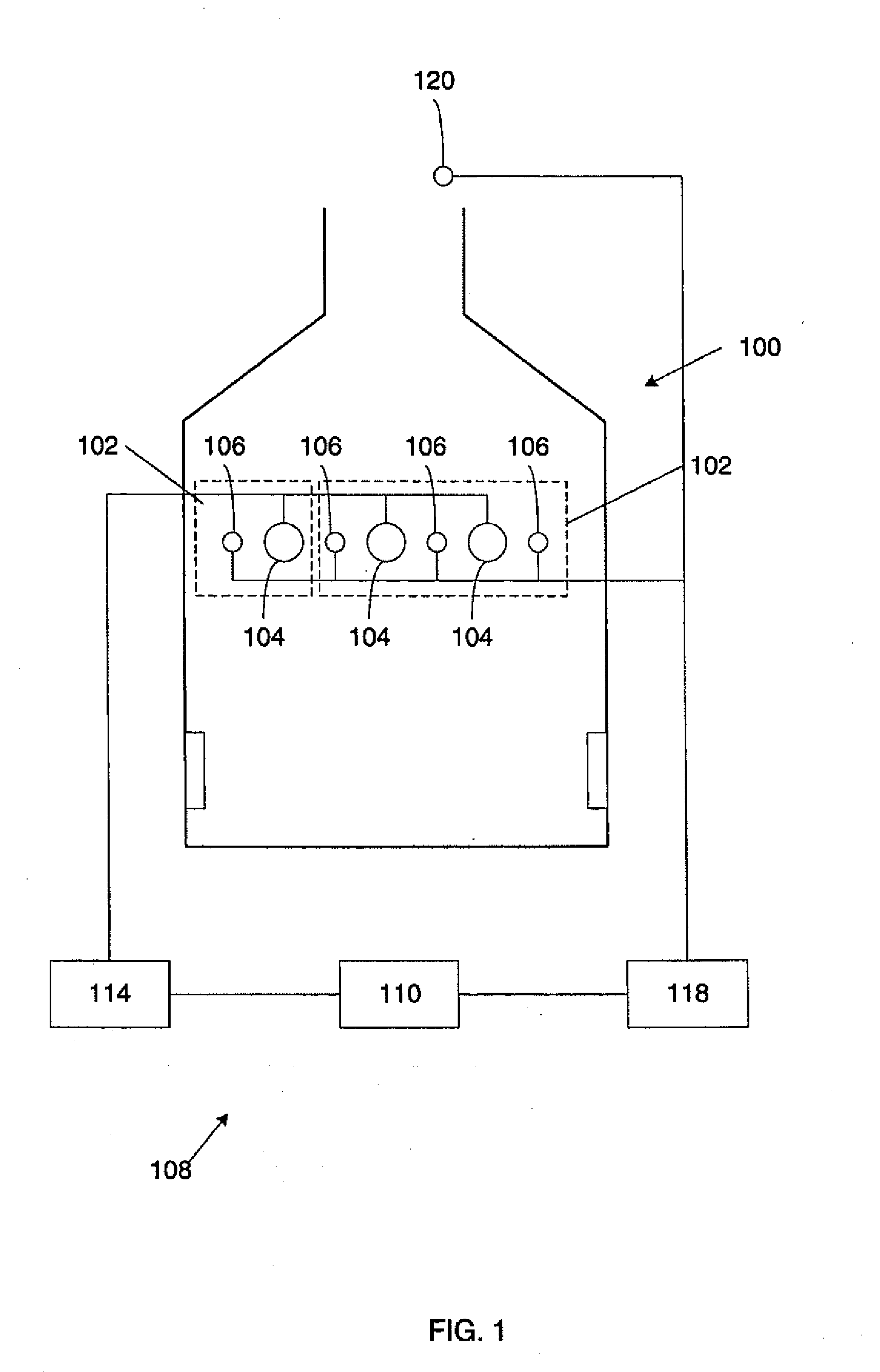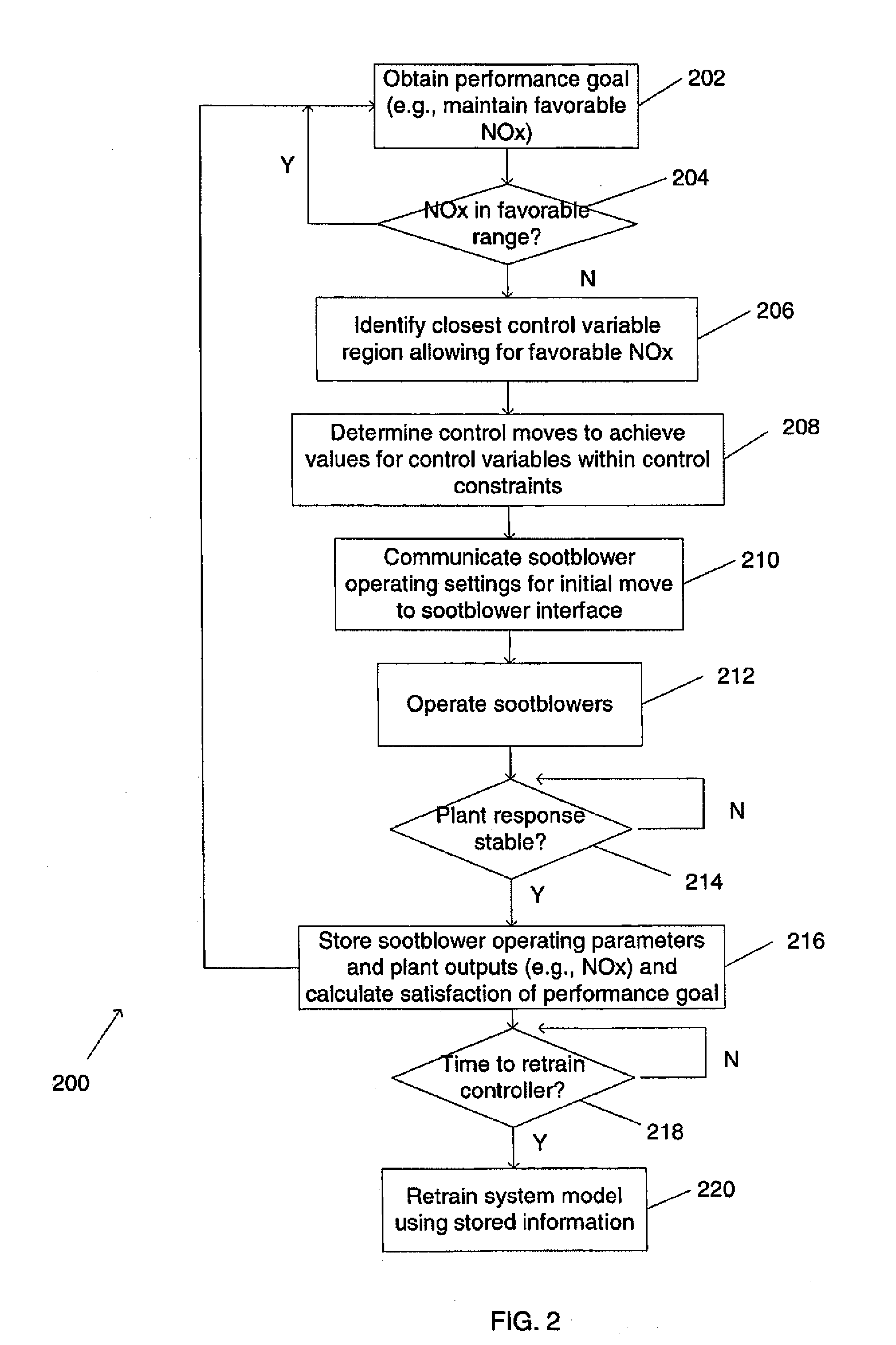Method for sootblowing optimization
a technology of optimization and soot blowing, which is applied in the direction of boiler cleaning control devices, solid removal, tableware washing/rinsing machines, etc., can solve the problems of reducing the efficiency of the boiler, reducing the heat transfer efficiency of the tubes, and reducing the boiler efficiency, so as to achieve the determination of the cleanliness levels of different heat zones in the boiler.
- Summary
- Abstract
- Description
- Claims
- Application Information
AI Technical Summary
Benefits of technology
Problems solved by technology
Method used
Image
Examples
Embodiment Construction
[0025]As illustrated in FIG. 1, in order to maintain boiler efficiency, a fossil fuel boiler 100 is divided into one or more heat zones 102, each of which can separately be monitored for heat transfer efficiency. In order to clean the boiler surfaces in a heat zone 102 when the heat transfer efficiency in the heat zone 102 degrades below a desired level due to the accumulation of soot, each heat zone 102 includes one or more sootblowers 104. Each heat zone 102 also includes one or more sensors 106 that measure one or more properties indicative of the amount of soot on the boiler surfaces in the heat zone 102. The data collected by the sensors 106 is useful both for timing sootblowing operations and for determining the effectiveness of sootblowing operations. The boiler 100 includes a deposit removal optimization system 108, with a controller 110 that configures a sootblower control interface 114 in communication with sootblowers 104. The deposit removal optimization system 108 adjus...
PUM
 Login to View More
Login to View More Abstract
Description
Claims
Application Information
 Login to View More
Login to View More - R&D
- Intellectual Property
- Life Sciences
- Materials
- Tech Scout
- Unparalleled Data Quality
- Higher Quality Content
- 60% Fewer Hallucinations
Browse by: Latest US Patents, China's latest patents, Technical Efficacy Thesaurus, Application Domain, Technology Topic, Popular Technical Reports.
© 2025 PatSnap. All rights reserved.Legal|Privacy policy|Modern Slavery Act Transparency Statement|Sitemap|About US| Contact US: help@patsnap.com



